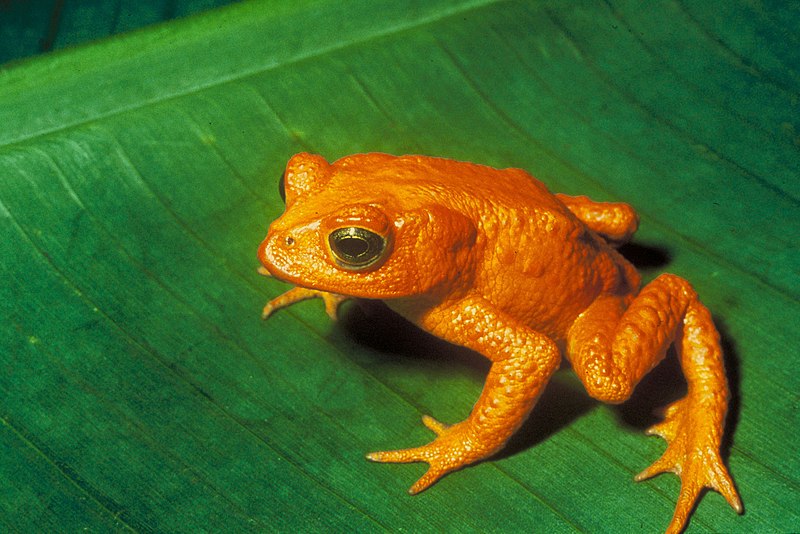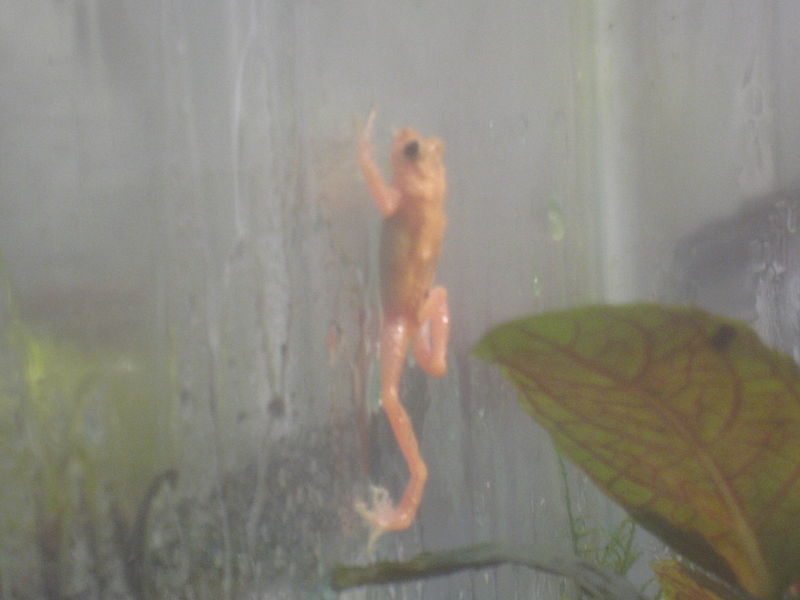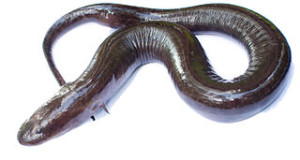 Hundreds of amphibian species have been drive to extinction in recent years, and an estimated 30% of those remaining may soon follow. Because most are difficult to find, herpetologists are now asking the public’s help in locating 100 species that are considered extinct but may still hold on in small numbers.
Hundreds of amphibian species have been drive to extinction in recent years, and an estimated 30% of those remaining may soon follow. Because most are difficult to find, herpetologists are now asking the public’s help in locating 100 species that are considered extinct but may still hold on in small numbers.
The recovery effort, launched this month (August, 2010) by Conservation International and the IUCN, spans the globe. Even questionable sightings and photos are welcome –after all, a dog in Montana tipped researchers to the fact that the Black-Footed Ferret was not extinct (by killing one!), so you never know…
There is even a “10 Most Wanted List”, the members of which I’ll describe below.
Golden Toad
This brilliantly colored Costa Rican native is the amphibian world’s answer to the Giant Panda. Last seen in 1989, the Golden Toad sounded the amphibian crisis alarm. Because this toad’s cloud forest habitat was pristine and isolated, it’s demise opened our eyes to the fact that subtle, largely unstudied factors – emerging diseases, acid rain, climate change – might be behind the rising tide of frog extinctions.
Gastric Brooding Frog
Females of this species, missing from Australia since 1985, swallow their eggs, incubate them in the stomach and “give birth” via their mouths! Studying their ability to shut down the flow of digestive enzymes during incubation might have yielded important insights into human digestive disorders.
Jackson’s Climbing Salamander
Fantastically colored in greenish-yellow below and jet black above, this arboreal salamander shelters in bromeliads and has not been seen in its native Guatemala since 1975.
Mesopotamia Beaked Toad
This Columbian oddity has been missing since 1914, and is known only from drawings. Its isolated habitat is largely unexplored, and so there is hope it still holds on.
African Painted Frog
No photos of this elusive frog exist. Native to the Democratic Republic of Congo and Rwanda, it has remained undetected since 1950.
Rio Pescado Stubfoot Toad
This black-spotted, orange toad appears to have been killed off by Chytrid fungus infection, an emerging disease responsible for numerous extinctions. It disappeared in 1995.
Turkestanian Salamander
This salamander is known from only 2 specimens, collected in 1909 in Kyrgyzstan, Uzbekistan or Tajikistan. It has not been seen since.
Scarlet Frog
Rivaling the Poison Frogs in color, this beauty is native to a single stream in a Venezuelan cloud forest. It was last observed in 1990.
Hula Painted Frog
This unstudied frog was restricted to marshes in Israel. Mosquito control measures may have spelled its demise in 1955, the last year it was observed.
Samba Stream Toad
Logging operations that released sediment into streams likely spelled disaster for this native of Borneo. Last collected in the 1950’s, it may still survive in unexplored patches of forest.
Kihansi Spray Toad: a possible success story
 “Discovered” in 1996, this live-bearing toad’s range is limited to the spray zone of a single waterfall in Tanzania – a mere 5 acres.
“Discovered” in 1996, this live-bearing toad’s range is limited to the spray zone of a single waterfall in Tanzania – a mere 5 acres.
I had the good fortune of working with a group that was taken to the Bronx and Toledo Zoos for captive breeding, and which grew in number to 6,500 individuals. The species was declared extinct in the wild in 2009, but a reintroduction program is planned.
Further Reading
Rare but Unprotected Amphibians Native to the USA.
See photos of more missing amphibians and learn how to help here.
Kihansi Spray Toad image referenced from wikipedia and originally posted by Ruby1x2
 That Reptile Blog – Reptile, Amphibian and Exotic Pet Care and Information
That Reptile Blog – Reptile, Amphibian and Exotic Pet Care and Information


